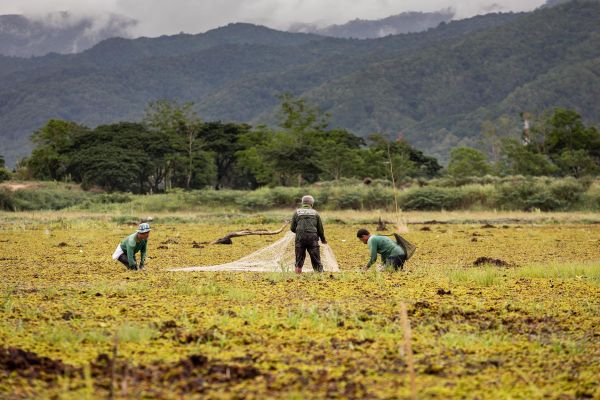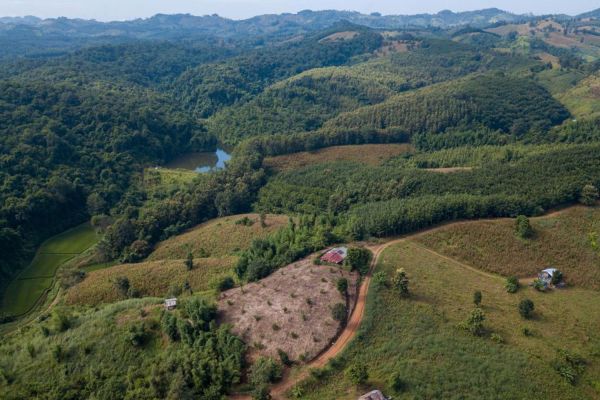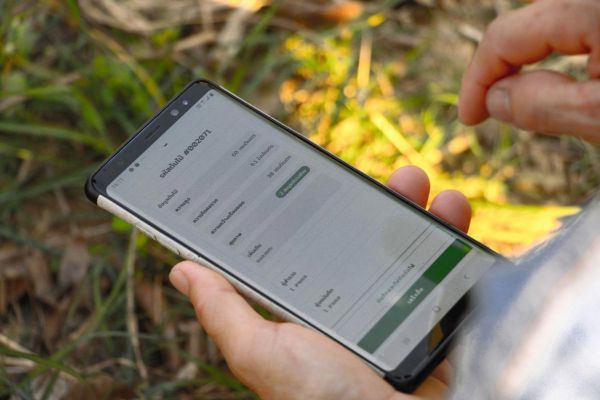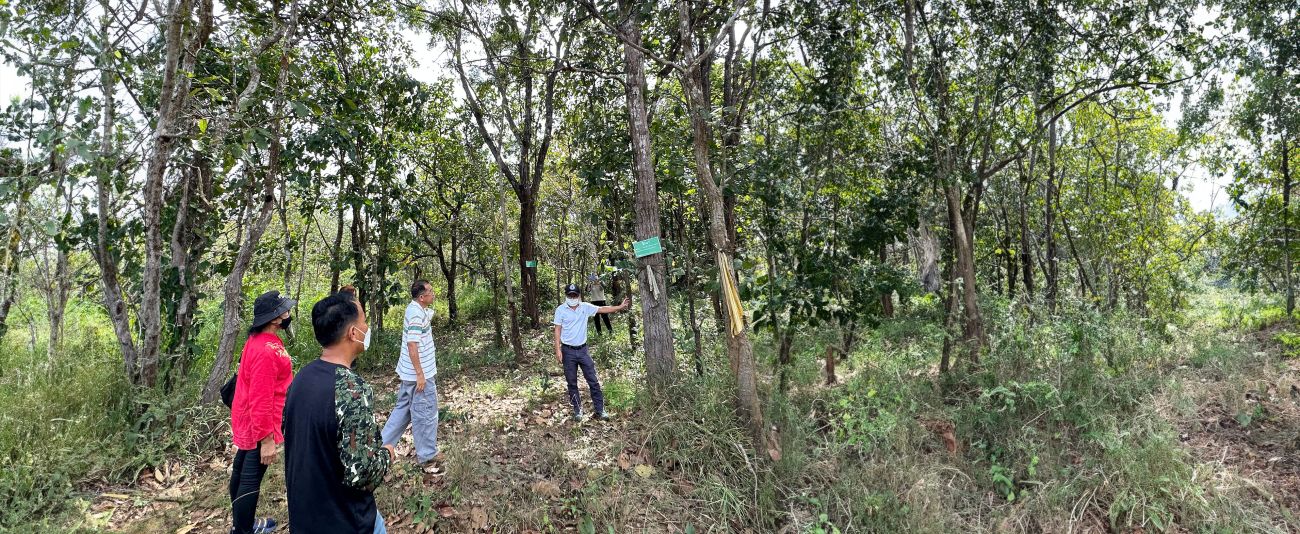
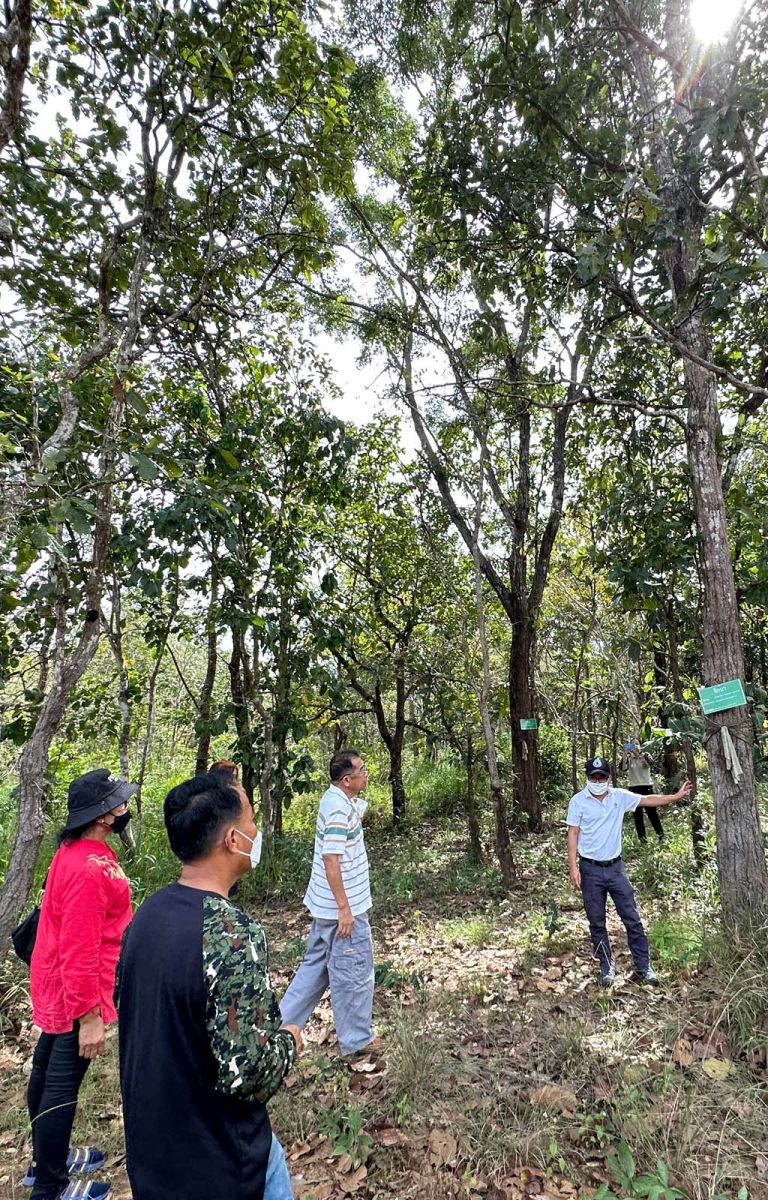
“If no one knows about our community forests, it’s as if our forests don’t exist,” says Thammarat Moonsarn, the youth communication officer for tourism in the Kaeng Lawa Community Forest (link in Thai) in Thailand’s Khon Kaen Province.
Kaeng Lawa is one of several active community forests located on public land that has not yet been recognized formally. At the same time, there are nearly 12,000 community forests that Thailand has formally recognized since 2019, giving local people rights to use and benefit from the forests’ resources.
Combined, these formally recognized areas cover close to a million hectares. But there is a lack of information about either the formally recognized community forests or those that have not been formally recognized. This is preventing this model of forest management from reaching its potential and the formally unrecognized community forests from being acknowledged by the public.
“Thailand’s community forests, whether formally recognized or not, are largely invisible in online platforms,” says Warangkana Rattanarat, director of RECOFTC Thailand. “Very little data from these forests reaches the public, so outsiders are unaware of the goods and services they provide. This means communities are missing opportunities to gain sustainable incomes from their forests.”
That is now changing thanks to a RECOFTC Thailand project called CF-NET that established the Citizens’ Forest Network. As well as giving communities greater roles in forest governance processes, it has literally put Thailand’s community forests on the digital map. This is enabling the communities managing those areas to connect with each other, with potential customers and partners, and with the public at large.
Legal reforms
The CF-NET project (link in Thai) began in 2018 amid big changes to forest governance in Thailand. The following year, the government enacted the Community Forest Act and other major laws. Together with their subsidiary regulations, they determine the rights and benefits that communities can receive from forest resources in different types of land
RECOFTC Thailand developed CF-NET to empower civil society to advocate for community rights and priorities as the new laws and forest governance mechanisms emerged. The project ran from March 2018 to July 2022. It was funded largely by the European Union and implemented by RECOFTC Thailand in partnership with the Sustainable Development Foundation (SDF) and the Community Organizations Development Institute (CODI).
Among other things, the project strengthened community forest networks in 38 of Thailand’s 77 provinces, as well as national and regional networks. It empowered community representatives to engage with government authorities and influence the development of the regulatory framework.
Mapping the forests
To begin to address the lack of public data about Thailand’s community forests, the Citizens’ Forest Network launched the website thaicfnet.org (link in Thai) in July 2022. The website aims to brings information about community forests in Thailand into one place. It includes a digital map of community forests registered with the Royal Forest Department. The map now displays more than 7,000 of the almost 12,000 registered community forests, including only those whose geographic coordinates and relevant information have been checked and approved.
So far, representatives of 432 community forests have uploaded additional information into the website’s searchable database (link in Thai). This includes details of their community forest management plans, key features of the forest, activities such as tree planting, and information on the products and services each forest provides.
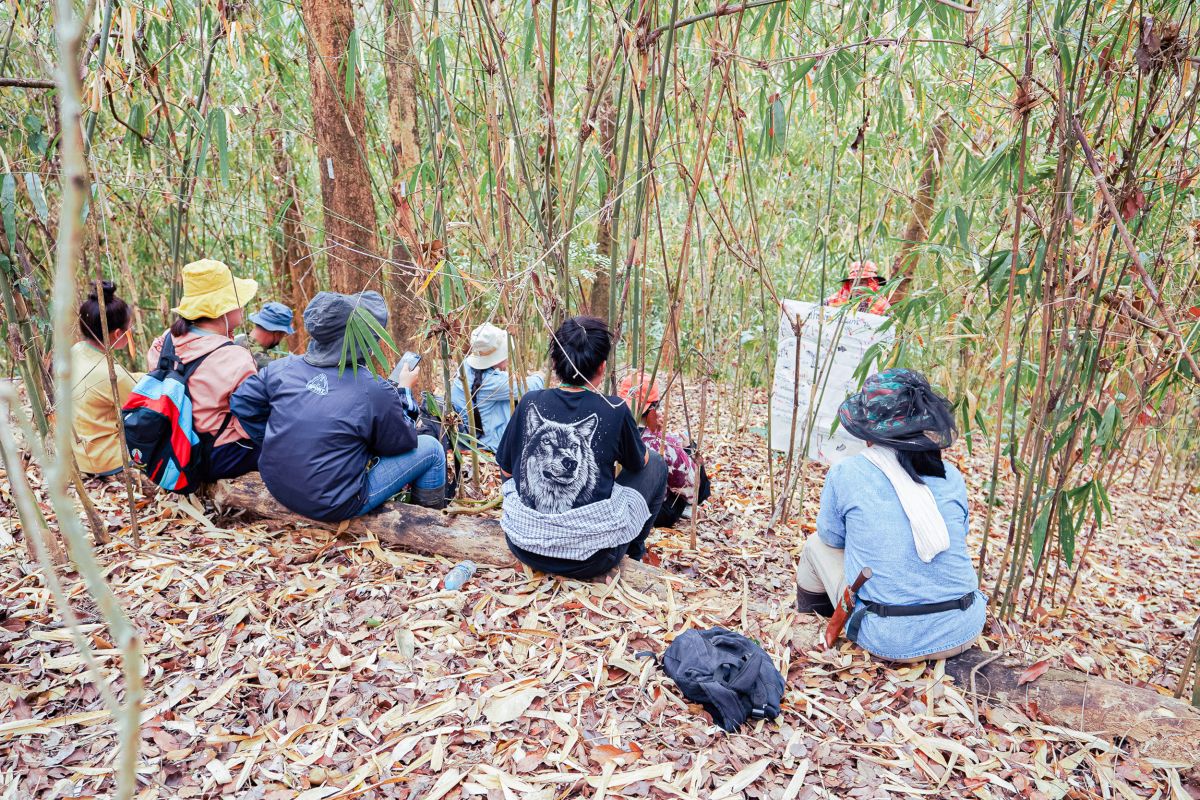
“When our community forest exists in the online world, it boosts trust among customers who buy our community products that those fruits and herbs truly come from our community forest,” says Naparee Techasena, a Citizens’ Forest Network member and public relations officer of Sri Boonrueng Village (link in Thai) in Nan Province. “I hope all community forests share information about their forests on thaicfnet.org and that more people discover our products,” she says.
Panich Moonchuea, a Citizens’ Forest Network member and leader of the Ban Prao Community Forest (link in Thai) in Sa Kaeo Province, sees a wider benefit of publicizing community forests online. “Increasing public understanding in this way can help urban citizens appreciate community forestry and support the communities working to manage these forests sustainably,” he says.
Building on success
“By establishing the Citizens’ Forest Network, the project has strengthened cooperation among communities and provincial and national authorities,” says Rattanarat. “It has also empowered marginalized members of community forests and greatly improved the flow of information from community forests to other stakeholders. These gains provide a firm foundation for future development.”
Increasing the quality and quantity of information on the Citizens’ Forest Network’s database is essential to enable the government to monitor and assess community forests. It is also an important resource for people living there to access markets and investment.
“The information in the Citizens’ Forest Database is easy to access, easy to understand, and not too scholarly,” says Thammarat Moonsarn from the Kaeng Lawa Community Forest. “I encourage community forest members to share their community forest- and resource-related information in the database.”

